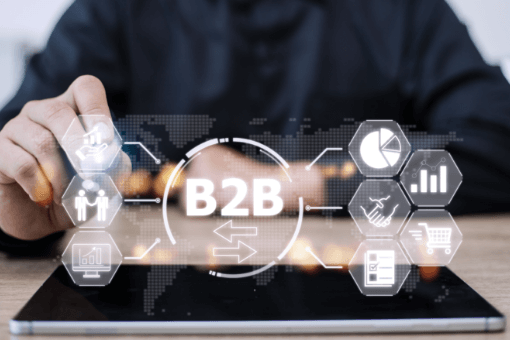B2B payments are changing—and for the better. For years, businesses have struggled with slow approvals, high fees, and confusing processes. But with new technology, payments between businesses are becoming faster, simpler, and more secure.
If your business still relies on outdated payment systems, you’re probably spending more time and money than you need to. This blog covers everything you need to know- what’s holding B2B payments back, what’s improving, and how you can make payments smoother for your business.
What Are B2B Payments?
B2B (business-to-business) payments are transactions between companies. For example, a restaurant paying its food supplier or a store paying a wholesaler for products.
Unlike personal payments, these transactions are usually bigger and involve extra steps like approvals or invoicing. While some businesses still use old methods like checks or bank transfers, newer options like digital platforms are becoming the norm.
The Biggest Challenges in B2B Payments

Even though payments are essential for any business, they’re not always easy to handle. Here are some of the common problems businesses face:
1. Slow Payments
With manual processes and approvals, payments can take days—or even weeks. This causes delays that can hurt cash flow and frustrate vendors.
2. High Costs
Transaction fees, especially for international payments, can be expensive. For small businesses, these fees can add up fast.
3. Complicated Approvals
When multiple people need to sign off on a payment, it slows everything down. The more approvals needed, the longer the payment takes.
4. Security Issues
Cyberattacks, fraud, and data breaches are big risks, especially for companies using outdated systems. Payments need to be secure, or they can cost you much more than just money.
5. No Payment Tracking
Without visibility into payment status, businesses don’t know if the payment is on its way, stuck in processing, or lost. This creates confusion and delays.
Trends That Are Changing B2B Payments

Luckily, payments between businesses are getting easier. These trends are making a big difference:
1. Digital Payment Platforms
Tools like Stripe, PayPal Business, and Square make payments quicker and easier. They also integrate with other software businesses already use, saving time and effort. 2
2. Instant Payments
With real-time payment options, money can move between businesses in seconds instead of days. This helps companies improve cash flow and pay vendors faster.
3. Automated Payment Systems
Automation removes the need for manual approvals or tracking. Platforms like Serina.ai handle recurring payments and invoice matching, cutting down errors and saving time.
4. Blockchain Technology
Blockchain provides secure and transparent transactions. It’s especially useful for global payments, as it cuts out middlemen and lowers fees.
Learn more about how blockchain is changing payments.
5. Better Cross-Border Payments
For businesses that work internationally, tools like Wise and Revolut Business reduce costs and make currency exchanges simpler. These platforms are built to handle the challenges of global trade.
Why Upgrade Your Payment System?

Making the switch to a modern payment system isn’t just about convenience—it also brings major benefits:
1. Faster Cash Flow
Quick payments mean businesses have money on hand when they need it. No more waiting around for days or weeks.
2. Lower Costs
Digital systems reduce processing fees and save businesses from spending extra on labor or fixing errors.
3. Better Security
Modern platforms include features like encryption and fraud protection, so payments are safer from hackers and scams.
4. Happier Vendors
When payments are on time and easy to track, vendors trust you more. Better relationships mean smoother business operations.
How to Choose the Right Payment System

Finding the best payment system depends on your business needs. Here’s what to look for:
- Ease of Use: A simple, user-friendly system is key.
- Security: Make sure the platform protects against fraud and data breaches.
- Scalability: Pick something that will grow with your business.
- Compatibility: Ensure the platform works with your accounting or ERP software.
- Cost: Choose a system that saves money on fees and admin time.
Real-Life Example: Serina.ai Makes Payments Easy

A large logistics company was struggling with manual payment processes. Payments were slow, and fees were eating into their profits. By switching to Serina.ai, they were able to:
- Cut payment processing times by 60%.
- Save 30% on transaction fees.
- Get real-time payment tracking, reducing delays and improving vendor relationships.
This upgrade didn’t just simplify payments; it made their whole operation smoother.
Explore more about Serina.ai’s payment solutions here.
What’s Next for B2B Payments?

The future of B2B payments is all about speed, automation, and better tools. Businesses can expect:
- AI-Powered Automation: Smart systems will handle approvals, detect fraud, and keep payments compliant with regulations.
- Embedded Payment Solutions: Payment features will be built into everyday tools like invoicing and accounting software.
- Global Payment Innovations: Blockchain and other tech will make international transactions faster and cheaper.
Businesses that adopt these changes now will stay ahead of the competition while saving time and money.
Final Thoughts
The way businesses pay each other is evolving fast. With faster payments, better security, and smarter systems, modern B2B payment solutions are solving old problems and creating new opportunities.
For businesses that want to stay competitive, now is the time to upgrade. Solutions like Serina.ai are already helping companies save time, reduce costs, and improve relationships with vendors.
It’s time to leave outdated systems behind and embrace the future of payments.


